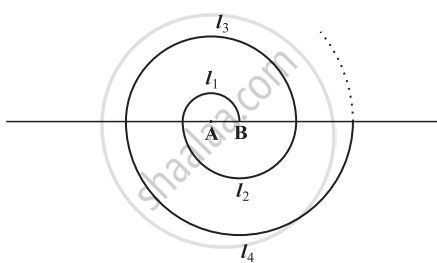Advertisements
Advertisements
प्रश्न
The sum of n terms of two A.P.'s are in the ratio 5n + 9 : 9n + 6. Then, the ratio of their 18th term is
विकल्प
- \[\frac{179}{321}\]
- \[\frac{178}{321}\]
- \[\frac{175}{321}\]
- \[\frac{176}{321}\]
non above these
उत्तर
In the given problem, the ratio of the sum of n terms of two A.P’s is given by the expression,
`S_n/S'_(n) = (5n + 9 ) /(9n + 6) ` .............(1)
We need to find the ratio of their 18th terms.
Here we use the following formula for the sum of n terms of an A.P.,
`S_n = n/2 [2a + ( n - 1) d ] `
Where; a = first term for the given A.P.
d = common difference of the given A.P.
n = number of terms
So,
`S_n = n/2 [2a + ( n - 1) d ] `
Where, a and d are the first term and the common difference of the first A.P.
Similarly,
`S'_(n) = n/2 [2a' + ( n - 1) d' ] `
Where, a’ and d’ are the first term and the common difference of the first A.P.
So,
`S_n /S'_(n)=( n/2 [2a + ( n - 1) d ])/(n/2 [ 2a' + ( n- 1) d'])`
`=( [2a + ( n - 1) d ])/( [ 2a' + ( n- 1) d'])` .....(2)
Equating (1) and (2), we get,
`=( [2a + ( n - 1) d ])/( [ 2a' + ( n- 1) d']) = (5n + 9 ) /(9n + 6) `
Now, to find the ratio of the nth term, we replace n by 2n - 1 . We get,
`=( [2a + ( 2n-1 - 1) d ])/( [ 2a' + ( 2n- 1- 1) d']) = (5(2n - 1) + 9)/(9(2n - )+6)`
`( 2a + (2n - 2) d )/( 2a' + ( 2n- 2) d')= (10n -5 + 9)/(18n-9+6)`
`( 2a + 2 (n - 1) d )/( 2a' + 2 ( n- 1) d') = (10n + 4)/(18n - 3)`
`(a + ( n - 1) d) / (a' + (n - 1) d') = ( 10n + 4)/(18n - 3)`
As we know,
an = a + ( n - 1 ) d
Therefore, for the 18th terms, we get,
`a_18 /(a'_(18))= (10(18) + 4) / (18(18)- 3) `
`= 184/321`
Hence `a_18/(a'_(18)) =184/321`
APPEARS IN
संबंधित प्रश्न
Find four numbers in A.P. whose sum is 20 and the sum of whose squares is 120
Divide 32 into four parts which are in A.P. such that the product of extremes is to the product of means is 7 : 15.
A spiral is made up of successive semicircles, with centres alternately at A and B, starting with centre at A of radii 0.5, 1.0 cm, 1.5 cm, 2.0 cm, .... as shown in figure. What is the total length of such a spiral made up of thirteen consecutive semicircles? (Take `pi = 22/7`)

[Hint: Length of successive semicircles is l1, l2, l3, l4, ... with centres at A, B, A, B, ... respectively.]
If numbers n – 2, 4n – 1 and 5n + 2 are in A.P., find the value of n and its next two terms.
If the sum of first n terms is (3n2 + 5n), find its common difference.
If m times the mth term of an A.P. is eqaul to n times nth term then show that the (m + n)th term of the A.P. is zero.
What is the sum of first 10 terms of the A. P. 15,10,5,........?
If the first, second and last term of an A.P. are a, b and 2a respectively, its sum is
A manufacturer of TV sets produces 600 units in the third year and 700 units in the 7th year. Assuming that the production increases uniformly by a fixed number every year, find:
- the production in the first year.
- the production in the 10th year.
- the total production in 7 years.
Q.4
